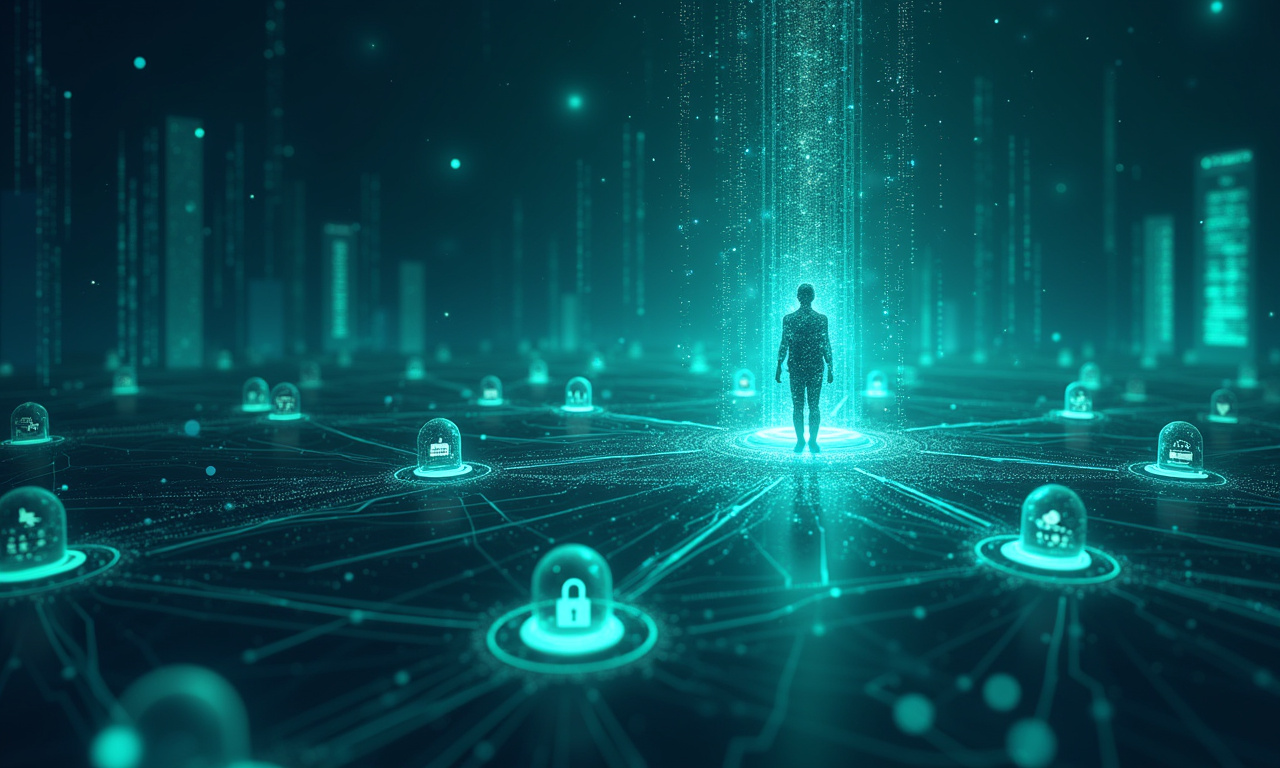We've all heard the hype, the whispers of revolution, the dreams of a world free from Big Tech's grip. NFTs, DeFi, DAOs… I know, I know, it all sounds incredible, right? Let's be honest with ourselves: Web3 adoption is still crawling. Why? Because as it stands today, it’s confusing, clunky, and frankly pretty intimidating to the average user.
Web3's User Experience Problem
Think about it. You want to buy an NFT. First, you need a crypto wallet. Then, you need to figure out how to deal with gas fees, seed phrases, and blockchain wallet addresses that are a long string of random letters and numbers. One misplaced click, one swapped number, and poof – money lost! Talk about a recipe for non-mass adoption, right? It's like trying to get everyone to switch to electric cars but telling them they have to build their own charging stations first.
We require a simple, convenient and safe method for individuals to control their digital identities between web applications. This is where Decentralized Identity (DID) comes into play. So, to put it simply, DID is a means for you to have ownership over your digital self. Gone is the need to trust Facebook, Google, or any other third party gatekeeper to verify you. You control your data and decide who you want to share it with. In addition, you can prove your age or other identity attributes across multiple platforms without sharing any PII. The decentralized identity systems market alone is estimated to be worth over $20 billion by 2027, but are we really prepared for this boom?
DID: The Missing Puzzle Piece?
Imagine a future where just connecting to a Web3 app is a simple experience. All you do to enter is scan a QR code with your phone or device. No more remembering passwords, no more forgetting usernames, no more sharing your personal information with all your favorite websites. With DID, this is possible. You may have the keys to your digital kingdom, but you too decide who is allowed through the gate.
This isn't just about convenience. It's about security and freedom. In a world of growing cyberattacks and privacy invasions, an easiest one to share protect yourself with DID. It’s about empowering you to take back control of your digital life.
Consider the ramifications on access to voting, healthcare, financial services, and beyond. Imagine being able to prove your identity and eligibility for services without revealing your age, address, or other sensitive information. That's the power of DID.
- Enhanced Privacy: You control the data you share.
- Increased Security: No more centralized databases to hack.
- Cross-Platform Compatibility: Use your identity across multiple Web3 applications.
- Reduced Fraud: Easier to verify identity and prevent impersonation.
But Is DID a Silver Bullet?
Hold on a second. Before we declare DID the savior of Web3, let's acknowledge the elephant in the room: it's complicated. We all know that managing private keys is not quite user-friendly for the average non-crypto native consumer. If you lose your key, you lose access to your whole digital identity. That's a terrifying prospect.
This is where the critics come in, and they’re right on the money. Are we removing the responsibility from centralized, top-down centers of security? The majority of these individual users can’t be expected to take on that burden. So what does happen when their private key is inevitably lost? Is there a recovery mechanism? What risks might DID create or exacerbate? For one, it could be misused for generating deep fakes or potentially identities that are not real to commit fraud or other illegal activities.
These are difficult questions, and there are no simple solutions. There’s plenty of reason to be concerned about the inherent risks of DID-related projects, and I understand that concern. The objective is to keep it simple and easy to use and understand. We just need wallets and identity management tools that are as easy to use as our favorite social media apps.
We must arm consumers with information so they better understand the value of digital identity and can learn how to safeguard it. We must build strong recovery systems so people don’t end up cut off from their identifiers.
Empowerment or New form of Control?
Despite its many technical challenges, there’s a political dimension to DID that is rarely discussed. In a time of expanding government surveillance and censorship, DID represents an important way to give power to the individual. Picture this — a world where no one can deplatform or censor you just for holding unpopular opinions. With DID, you own your identity, and no one can revoke it from you.
Naturally, this leads to fears that DID could be abused as a means to escape accountability. Yet I think the implications of empowering people to take back control over their digital identities are stronger than those dangers.
As various AI-powered identity verification tools come onto the market, this trend is exciting, but should we really trust AI with our identities? It’s through these biases and errors that we can do the most harm to our results. We need to deploy these technologies extremely prudently.
The market for decentralized identity systems is projected to explode in the next few years. Experts say they’ll grow at more than 20% a year! As it stands, Microsoft, IBM, and Okta are already pouring billions of dollars into this field. The true winners will be the enterprises that develop DID platforms that are fast, intuitive, and seamless enough to bring the technology into the mainstream.
DID isn’t the perfect solution, and it’s definitely not a magic bullet. It is an important part of the equation. Yet it’s the key that unlocks Web3’s potential, and ensures a more decentralized, secure, and empowering digital future. The future is ours to make it—are you ready to join us?




